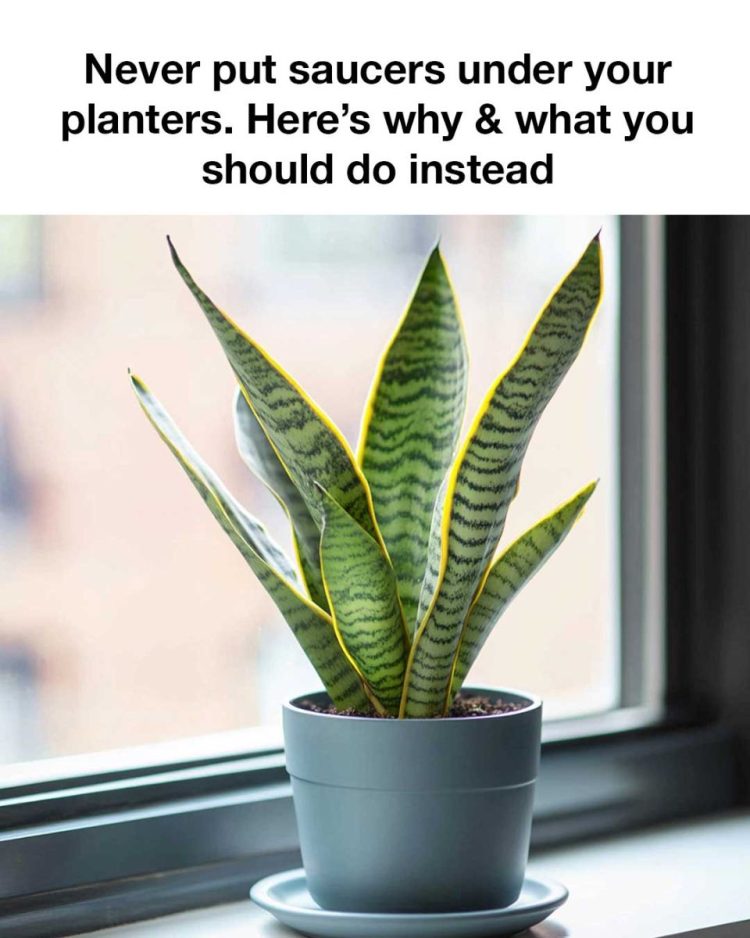Planter saucers are commonly used as a practical accessory for indoor and outdoor plants. They are typically placed underneath planters to catch excess water that drains out after watering. The idea is to prevent water from spilling onto floors or surfaces, thus keeping the area clean and dry. Saucers come in various materials such as plastic, ceramic, and metal, and are often chosen to match the aesthetic of the planter. While they may seem like a convenient solution, their use can lead to several issues that can negatively impact plant health and home maintenance.
The Problems with Using Saucers Under Planters
Using saucers under planters can create a host of problems that many plant enthusiasts might not initially consider. These issues range from plant health concerns to potential damage to home surfaces. Saucers can trap water, leading to overwatering and root rot, attract pests and mold, cause water damage to furniture or floors, and restrict airflow and drainage. Understanding these problems can help plant owners make more informed decisions about how to care for their plants effectively.
Reasons to Avoid Saucers Under Planters
There are several compelling reasons to avoid using saucers under planters. These reasons primarily revolve around the health of the plant and the maintenance of the surrounding environment. By exploring these reasons in detail, plant owners can better understand the potential drawbacks of using saucers and consider alternative methods for plant care.
Reason 1: Risk of Overwatering and Root Rot
One of the primary risks of using saucers is the potential for overwatering. When water collects in the saucer, it can create a consistently moist environment that prevents the soil from drying out properly. This can lead to root rot, a condition where the plant’s roots begin to decay due to excessive moisture. Root rot is often fatal to plants, as it impairs their ability to absorb nutrients and water. To avoid this, it is crucial to ensure that planters have proper drainage and that excess water is not left standing in saucers.
Reason 2: Attraction of Pests and Mold Growth
Standing water in saucers can attract pests such as mosquitoes, gnats, and other insects that thrive in moist environments. Additionally, the damp conditions can promote the growth of mold and mildew, which can spread to the plant and surrounding areas. Mold not only poses a risk to plant health but can also be a concern for human health, especially for those with allergies or respiratory issues. Keeping the area dry and well-ventilated is essential to prevent these problems.
Reason 3: Potential for Water Damage to Surfaces
Saucers can overflow or leak, leading to water damage on floors, carpets, or furniture. This is particularly problematic for wood surfaces, which can warp or stain when exposed to water. Even with a saucer, water can seep through cracks or overflow during heavy watering, causing damage that may be costly to repair. Using protective mats or trays that extend beyond the edges of the saucer can help mitigate this risk.
Reason 4: Limitation of Airflow and Drainage
Saucers can restrict airflow around the base of the planter, which is essential for healthy root development. Proper airflow helps the soil dry out between waterings, reducing the risk of fungal growth and promoting a healthy root system. Additionally, saucers can impede drainage, especially if they are not emptied regularly. Ensuring that planters have adequate drainage holes and are elevated to allow air circulation can help maintain plant health.
Alternative Solutions to Using Saucers

Ooops, guess I’ve been doing this wrong
ADVERTISEMENT
For Complete Cooking STEPS Please Head On Over To Next Page Or Open button (>) and don’t forget to SHARE with your Facebook friends
ADVERTISEMENT